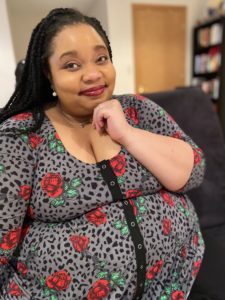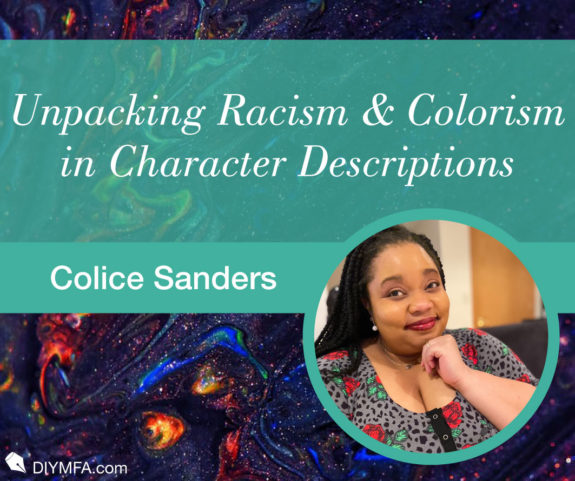We are continuing our quest to craft complex characters and build dynamic worlds that readers with marginalized identities can connect with. In my last column, It’s Messy in The Middle: Answering the Call, we discussed how to find the messy middle of writing underrepresented identities. In this essay, we will explore the historical context and societal value interwoven into racial and ethnic identity, particularly how it pertains to character descriptions. As authors, we must challenge ourselves to go deeper than carelessly slapping racial attributes on characters without understanding their context.
Season Two of Bridgerton
Thanks to the second season of the hit Netflix drama, Bridgerton, adapted from the historical romance series written by Julia Quinn, we are having a much-needed international conversation about colorism. This season featured a 19th-century steamy love triangle between the most eligible Englishman, Anthony Bridgerton (played by Johnathan Bailey), and the regal and captivating South Asian sisters, Kate (played by Simone Ashley), and Edwina Sharma (played by Charithra Chandran). Some of the conversations have centered around the excitement of casting two dark-skinned British women with Indian heritage in leading roles.
Bertha Antoinetta Mason
Bridgeton made me think of another romance novel set in the 19th-century that featured a love triangle between an Englishman (Mr. Rochester), a devoted English governess (Jane Eyre), and a Jamaican and Creole madwoman (Bertha Antoinetta Mason). Of course, I’m referring to Charlotte Brontë’s 1847 novel, in which the character Antonietta was portrayed as a gruesome caricature of a mad black woman. Upon meeting Antoinetta, Jane describes her as:
- “a woman tall and large, with thick and dark hair hanging down her back.”
- “Fearful and ghastly to me…It was a discoloured face—it was a savage face. I wish I could forget the roll of red eyes and the fearful blackened inflation of linaments.”
- “a figure ran backwards and forwards. What it was, whether beast or human being, one could not, at first sight, tell: it groveled . . . on all fours, it snatched and growled like some strange wild animal”
Instead of simply dismissing Bronte’s racist character descriptions as a sign of the times, let’s explore further.
It’s important to remember that there is no biological basis for race. Race cannot be determined through science. Race, instead, is a social construct developed by the British ruling class to validate white racial identity and vilify blackness, to protect their power at the time. For over two hundred years, the myth of race was perpetuated through American institutions and society. Bronte’s racist rhetoric is evidence of a job well done.
But, in order to fully comprehend the social construction of race, we need to go back to the Bacon’s Rebellion.
The Birth of Racial Identity
Bacon’s Rebellion, led by Nathaniel Bacon over frustrations with the British and the ruling class, was the first rebellion in the American colonies. It took place in Jamestown, Virginia from 1676 to 1677. The most scandalous aspect of Bacon’s rebellion was that he dared to join forces with indentured servants, Native Americans, and Africans to attack the ruling elite.
This deadly rebellion led to a conscious effort to create a white ruling class, to avoid being overrun. Suddenly laws were being created that granted access to public office, property, housing, and work for Whites only. Whiteness was defined by the physical attributes that were common for fair skin. White racial identity became a mode of upward mobility. For those who were willing to assimilate, change their names, lose their accents, and hide their customs, prosperity was promised.
Understanding that racial identity is a social construct, created to advance one group while stifling another, helps underscore the impact our characters’ physical attributes can have on our readers. This is especially important when considering the historical undesirability associated with black features. These attributes can carry both painful and triumphant histories.
Accent, hair texture, eye shape, lip thickness, nose width, and skin color are all legitimate ways to illustrate a character’s racial and ethnic identity. But we can longer ignore that these attributes come with explicit values of good and evil.
In fact, those character descriptions and traits associated with blackness are often deemed as too much, when they appear on black bodies. Lips that are too full, noses with nostrils that are too wide, bodies that are too curvy and take up too much space, hair that is too curly and unruly, and, in returning to our focus on colorism, skin that is too dark.
Colorism
Colorism refers to the explicitly communicated value for light skin tones over dark skin tones within Black Indigenous and People of Color (BIPOC) communities. Its use as a weapon lays bare for us the cost of white supremacist standards of beauty. As a result, BIPOC communities continue to obsessively identify, evaluate, and categorize each other based on skin color. The way the world perceives lightness or darkness can lead to very different realities.
Walking through the world with light skin can provide unearned advantages in BIPOC communities through its association with superior morality, normalcy, and intelligence. For example, motion detection devices were designed with light skin in mind. Items like makeup, shapewear, band-aids, and flattering color patterns that match your skin tone are readily available. There’s no need to pray that the school photographer has experience in capturing your skin tone. Popular celebrities and fictional characters of your racial group often match your skin tone.
Walking through the world with dark skin can mean navigating more than the obstacles like the ones mentioned above. Society associates dark skin with criminality, untrustworthiness, and a predilection toward violence, which can jeopardize health and safety.
Back to Bridgerton
Season two of Bridgerton is a great example of the power of representation over tokenization. The characters Katie and Edwina Sharma were written as dynamic and courageous women, which provided the space for Charithra Chandra and Simone Ashley to bring them to life and connect with audiences. The story did not overly focus on, nor hide from, their cultural differences. This is what is possible when we craft complex characters and build dynamic worlds that readers with marginalized identities can connect with. #charactergoals
Things To Consider
Crafting character descriptions that include racial identity can be messy and imperfect. We need to accept that we can’t portray “the” experience or create characters that represent everything for everyone.
We can, however, offer intentional experiences and viewpoints that illustrate the complex experiences of BIPOC. Are there things you would change in your current writing project or character descriptions after reading this passage? Use the questions below to guide you in your writing.
Considerations for Crafting Racial and Ethnic Character Descriptions
- Be specific: why have you chosen this identity group?
- How does this character enhance or advance your story?
- How can you demonstrate the way your character’s racial identity impacts their view of themselves and connections with others?
- Be intentional with the descriptions that portray racial and ethnic identity. Research using credible sources. Interview and listen to BIPOC with varied experiences.
- Consider including the unique and complex experiences of biracial identity.
- Consider using more than skin color to convey race and ethnicity.
- Consistently describe all characters’ traits, not just BIPOC characters.
- Consider describing skin color by pairing hues, shades, and tones instead of relying on food.
- Note: Using food descriptions to refer to BIPOC is not considered a politically correct writing practice because it can be seen as reinforcing colorism. This is a relatively new concept for me, as someone who has been raised to hear love and affinity in these types of descriptions. However, after researching this concept, I haven’t been able to overlook the possible association that chocolate, brown sugar, or honey could have with the crops my ancestors were forced to grow. Did slave owners use food descriptions to sell my ancestors at slave auctions?
Tell us in the comments: Are there things you would change in your current writing project or character descriptions after reading this passage?

Colice Sanders is a blogger and motivational speaker. Colice writes YA, poetry, and memoir. Her blog areasontorise.com chronicles her journey of radical self-acceptance through the lens of childhood trauma. You can reach her on Facebook, Twitter, or Instagram!







